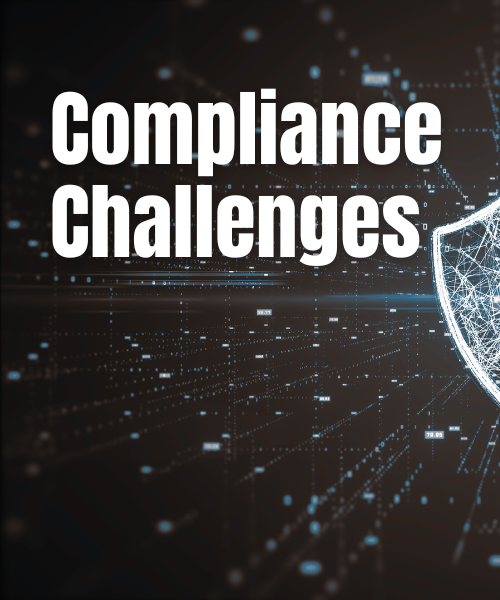
In today's digital landscape, the importance of cybersecurity cannot be overstated, particularly for C-suite leaders. The article titled "10 Essential Information Security Alerts for C-Suite Leaders" underscores the critical need for executives to remain vigilant about cybersecurity threats and vulnerabilities through timely alerts. By leveraging resources such as the Cybersecurity and Infrastructure Security Agency (CISA) advisories and Automated Indicator Sharing (AIS), leaders can make informed decisions that not only enhance their organizations' security posture but also bolster operational resilience against evolving cyber threats.
As the threat landscape continues to evolve, healthcare organizations face unique challenges that demand immediate attention. The implications of these threats are profound, impacting not just data security but also patient trust and organizational integrity. C-suite executives must prioritize these alerts to navigate the complexities of cybersecurity effectively.
By integrating these strategies, leaders can proactively address potential vulnerabilities, ensuring their organizations are prepared to respond to the dynamic nature of cyber threats. This proactive approach is not just beneficial; it is essential for safeguarding organizational assets and maintaining stakeholder confidence.
In an era where digital threats evolve at lightning speed, the significance of cybersecurity alerts has never been more pronounced, particularly for C-suite leaders tasked with safeguarding their organizations. These alerts not only provide crucial insights into emerging risks but also empower executives to make informed decisions that can protect their assets and ensure compliance with industry standards.
However, with the sheer volume of potential threats and the complexity of modern cyber landscapes, how can leaders effectively navigate this critical information to bolster their defenses and mitigate risks? This question underscores the urgency of understanding the current cybersecurity landscape and its implications for organizational resilience.
In today's rapidly evolving digital landscape, the importance of cybersecurity cannot be overstated. Cyber Solutions Inc. offers a collection of cybersecurity alerts meticulously crafted to keep businesses informed of potential risks. These alerts are tailored to meet the specific requirements of various industries, enabling organizations to respond promptly to emerging threats. For instance, the recent CrowdStrike report highlighted a staggering 150% increase in China-related activity, underscoring the necessity for timely alerts to mitigate such risks.
By leveraging advanced technologies and expert insights, Cyber Solutions empowers C-suite executives to make informed decisions that safeguard their assets and ensure compliance with industry regulations. The impact of these alerts extends beyond immediate risk awareness; they play a pivotal role in shaping strategic business decisions. This enables leaders to allocate resources effectively and prioritize cybersecurity initiatives. As the threat landscape continues to evolve, the significance of these alerts becomes increasingly critical, positioning them as an indispensable resource for any organization aiming to enhance its security posture and operational resilience.
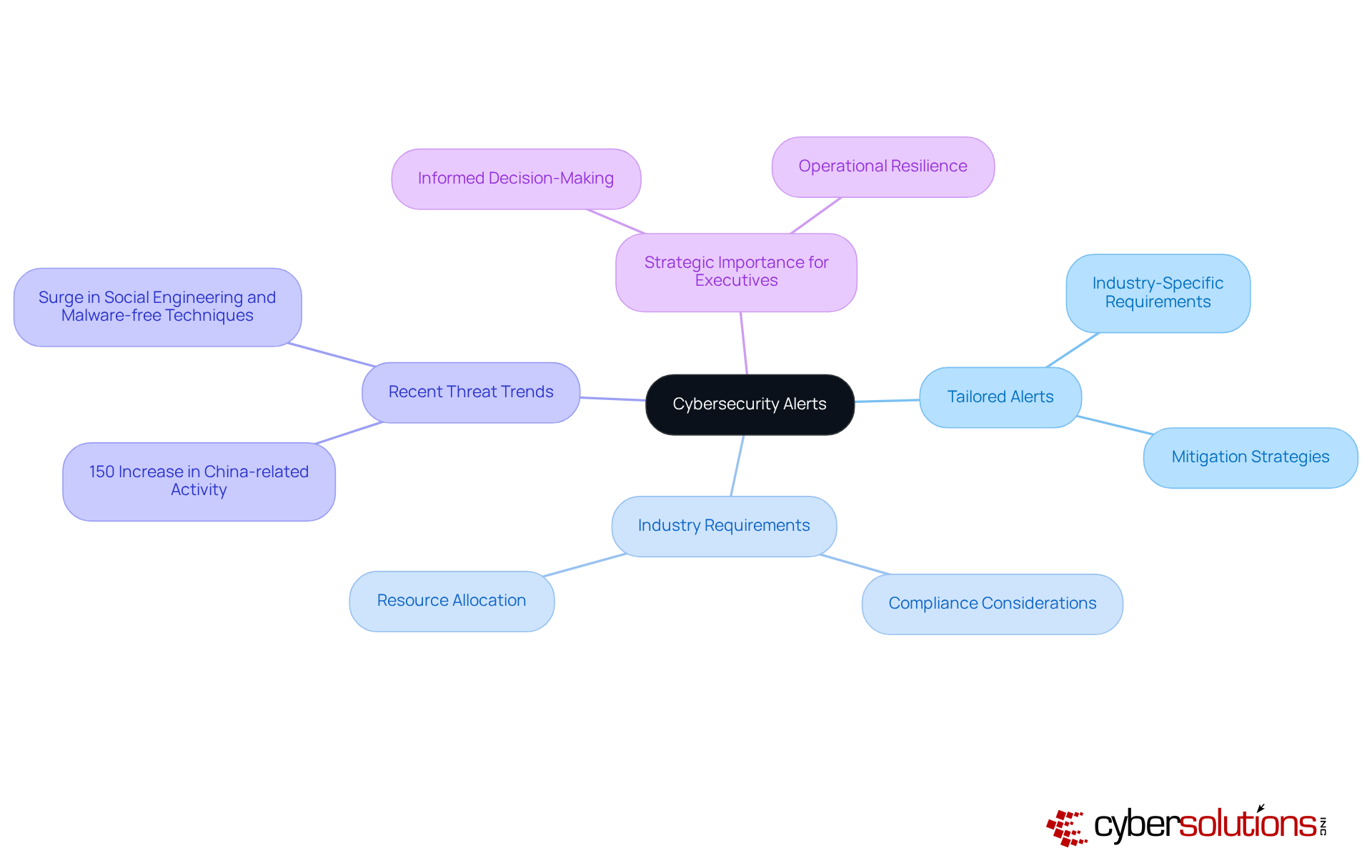
In today's digital landscape, the significance of cybersecurity cannot be overstated, particularly within the healthcare sector. The Cybersecurity and Infrastructure Security Agency (CISA) plays a vital role in safeguarding organizations by issuing advisories that detail newly discovered vulnerabilities and ongoing threats. C-suite leaders must recognize the importance of subscribing to these advisories to proactively mitigate potential risks. Entities that have successfully implemented CISA's recommendations, such as application allowlisting, have reported notable enhancements in their protective measures, demonstrating the advisories' practical value in real-world scenarios.
Application allowlisting stands as the gold standard in cybersecurity, as it effectively prevents malware and unauthorized software from executing. This proactive approach significantly reduces the attack surface and minimizes vulnerabilities. Furthermore, it aids organizations in meeting stringent compliance requirements, including:
while simultaneously bolstering their overall security framework. By restricting the applications permitted to operate, organizations can effectively thwart ransomware and other malicious software from infiltrating their systems. Elements such as centralized management and ongoing monitoring further enhance this strategy, enabling organizations to manage allowlists efficiently and identify unauthorized software attempts in real-time.
Staying informed on CISA advisories empowers executives to implement timely information security alerts that help safeguard sensitive data and uphold operational integrity. Recent advisories have highlighted critical vulnerabilities, acting as important information security alerts for organizations to prioritize their remediation efforts. How prepared is your organization to respond to these emerging threats?
Moreover, CISA underscores the importance of timely remediation as a cornerstone of an effective vulnerability management strategy. By adhering to these advisories and executing proactive strategies like application allowlisting, organizations can significantly diminish risks associated with cyberattacks. As CISA continues to update the KEV Catalog with new vulnerabilities, it is imperative for executives to remain vigilant and responsive to these updates, ensuring their organizations are well-equipped to navigate the evolving threat landscape.
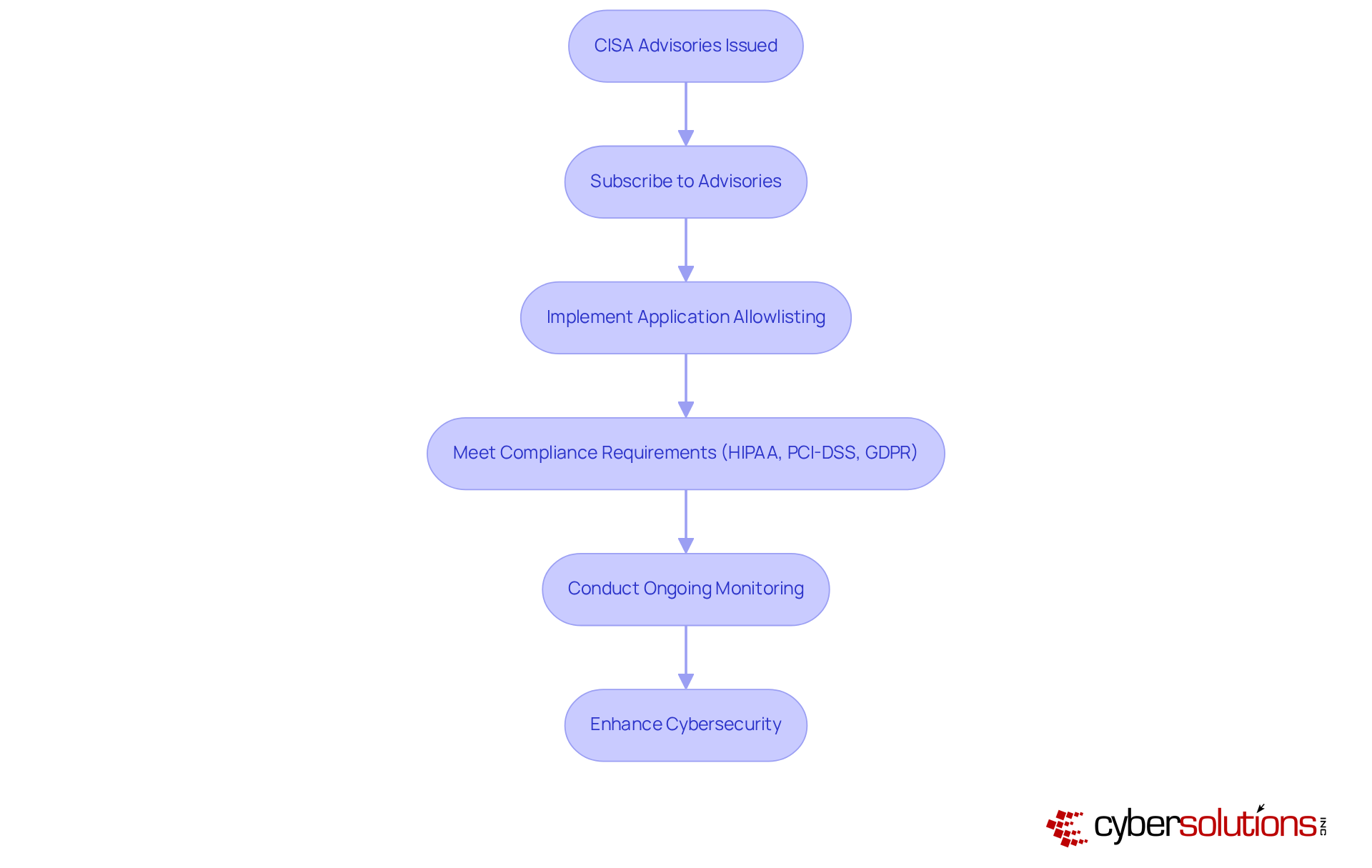
In today's digital landscape, cybersecurity is not just a necessity; it is a critical component of organizational resilience. Cyber Solutions' 24/7 network monitoring and alert services empower organizations with real-time information security alerts regarding potential security incidents. By continuously monitoring for anomalies and vulnerabilities, we enable swift action to prevent downtime or breaches.
C-suite executives must prioritize the integration of Cyber Solutions' proactive cybersecurity offerings. These services are meticulously designed to protect against ransomware, phishing, and other malware attacks. With information security alerts, instant alerts, and real-time insights, leaders can significantly enhance their risk detection capabilities and streamline incident response processes. Our risk intelligence and customizable access controls ensure that only authorized users gain entry, adapting as your operations expand.
This proactive approach not only mitigates the risk of costly breaches but also aligns with current trends in cybersecurity management. Organizations increasingly recognize the value of real-time insights and information security alerts in safeguarding their operations. By leveraging Cyber Solutions' extensive monitoring services, executives can ensure their entities remain robust against evolving cyber challenges. This commitment ultimately fosters a culture of safety and compliance.
To maximize these benefits, C-suite leaders should regularly review and adjust their protective configurations to stay ahead of the changing threat landscape.
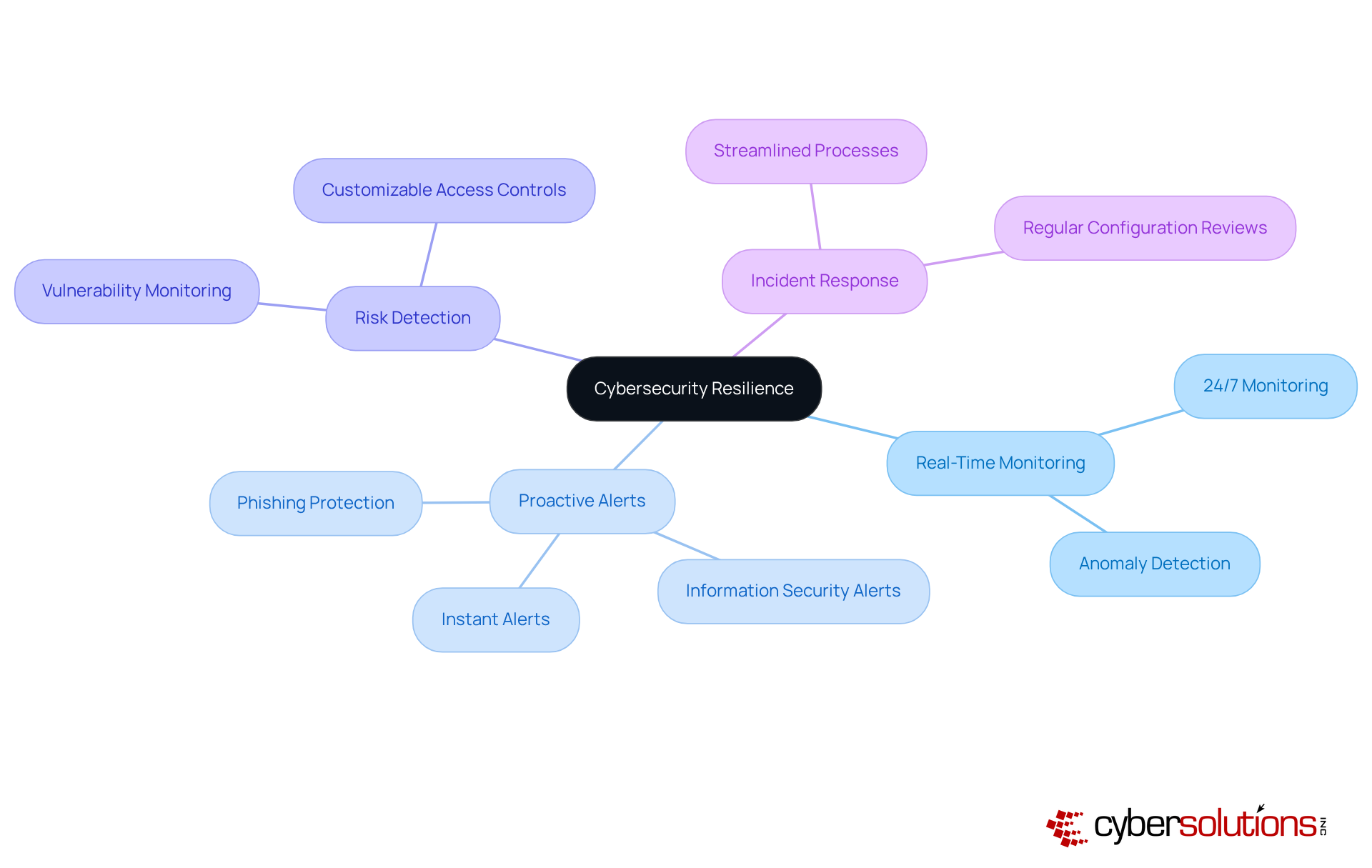
In today's digital landscape, the importance of cybersecurity cannot be overstated, particularly for organizations relying on Adobe's Creative Cloud services. Adobe frequently issues warnings regarding vulnerabilities that pose significant risks, potentially impacting the operational integrity of these organizations. Recent updates have addressed critical vulnerabilities that could allow attackers to bypass security measures or execute arbitrary code. Therefore, C-suite leaders must prioritize monitoring these alerts to mitigate risks associated with potential exploits.
Organizations like Adobe Commerce exemplify effective responses to vulnerabilities, swiftly implementing protective updates to safeguard their creative assets and sensitive information. This proactive approach is not merely a best practice; it is essential for maintaining the trust of clients and stakeholders. Expert insights emphasize the necessity for IT teams to be adequately prepared to respond promptly to Adobe's updates, reinforcing the need for vigilance in today’s threat landscape.
Such diligence not only protects against cyber risks but also ensures compliance with regulatory standards, thereby strengthening the organization's overall defense posture. By adopting a proactive strategy, organizations can effectively navigate the complexities of cybersecurity, ensuring resilience against evolving threats. The question remains: are your systems prepared to respond to the next alert?
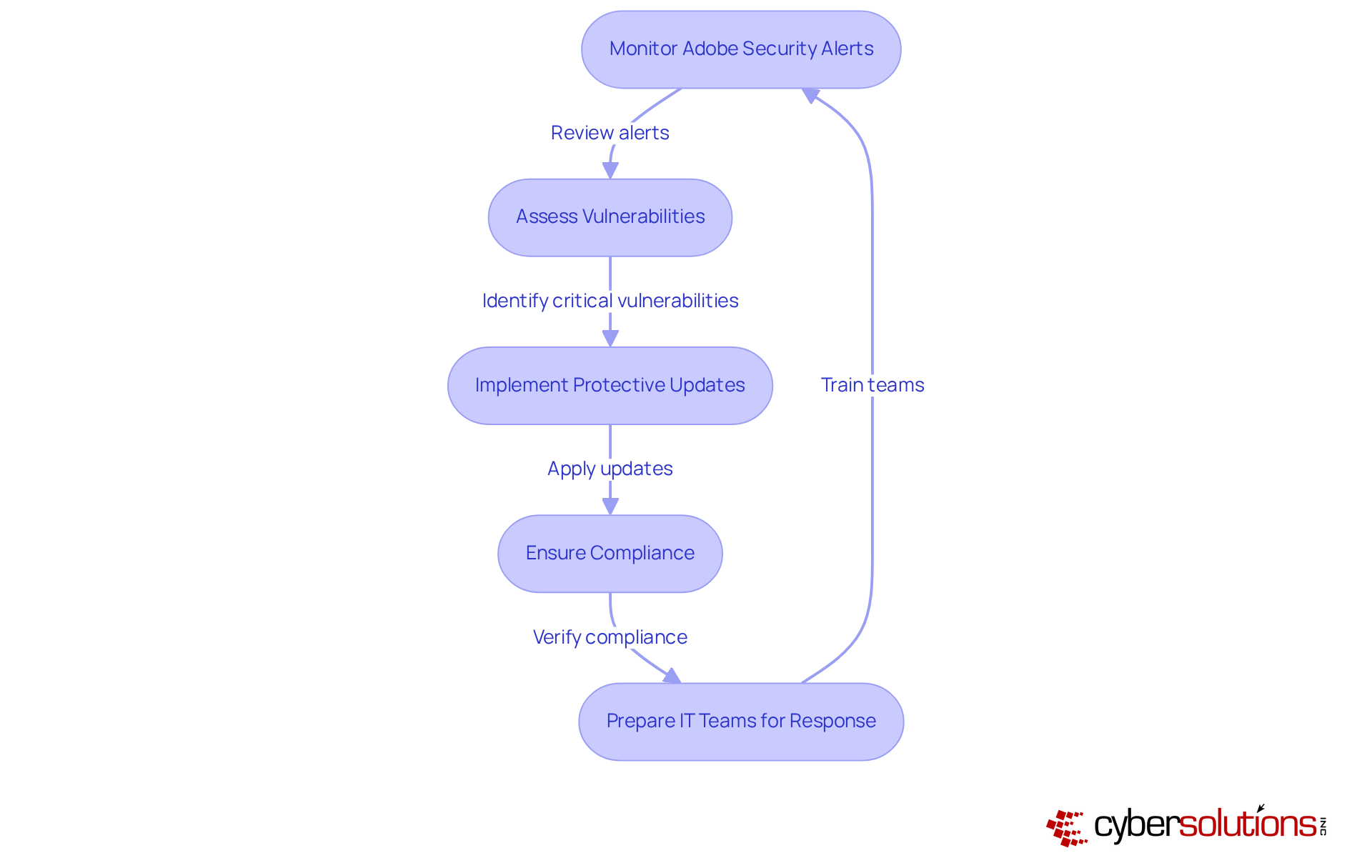
SecurityScorecard provides robust threat intelligence that equips organizations with the necessary insights to navigate the evolving landscape of cybersecurity threats and vulnerabilities. This intelligence empowers C-suite executives to proactively identify and mitigate potential risks, significantly bolstering their organization’s security posture. By routinely analyzing SecurityScorecard reports, executives can make informed, data-driven decisions that align with their risk management strategies. This proactive approach is crucial, especially considering that 88% of cybersecurity professionals express concerns about supply chain cyber risks, underscoring the urgent need for comprehensive risk management solutions.
Moreover, the implementation of application allowlisting is vital for organizations aiming to strengthen their cybersecurity framework. By permitting only pre-approved applications to operate, businesses can substantially diminish the risks associated with malware, ransomware, and unauthorized software execution. This practice not only ensures compliance with regulations such as HIPAA, PCI-DSS, and GDPR but also minimizes vulnerabilities and reduces the attack surface, making it increasingly difficult for attackers to exploit systems. As Dan Streetman, CEO of Tanium, aptly stated, "Organizations can’t afford blind spots in their vendor ecosystem." This highlights the critical importance of a well-rounded cybersecurity strategy.

In today's digital landscape, Hacker News stands as a vital platform for monitoring significant cybersecurity incidents and breaches. C-suite executives must establish a routine practice to engage with this resource, as it delivers timely updates on risks that could potentially impact their organizations. By thoroughly analyzing the nature and implications of these incidents, executives can bolster their preparedness and formulate effective response strategies to mitigate potential damages.
Staying informed through Hacker News not only aids in understanding the evolving risk landscape but also empowers executives to implement proactive measures that shield their organizations from emerging cyber threats. To further strengthen their defenses, C-suite leaders are strongly advised to integrate comprehensive 24/7 network monitoring and alert services. These services provide instant alerts and real-time insights as information security alerts, ensuring that suspicious activities are detected and addressed before they escalate into significant threats, thereby protecting businesses from ransomware, phishing, and other malware attacks.
Moreover, establishing access controls and tailored restrictions can significantly enhance an organization's cybersecurity posture. By adopting these strategies, executives can create a robust defense mechanism that not only safeguards their entities but also fosters a culture of security awareness throughout their organizations.

Information security alerts are vital for understanding the evolving landscape of social engineering risks, particularly phishing and pretexting attacks. Recent data reveals that social engineering attacks constituted 39% of initial access incidents in the first half of 2025, highlighting the urgent need for proactive measures. C-suite leaders must prioritize comprehensive employee training and awareness programs to effectively combat these threats. Organizations that cultivate a culture of security awareness can significantly reduce their risk of falling prey to social engineering tactics.
Successful employee training programs have proven effective in decreasing phishing incidents. For example, organizations leveraging platforms like KnowBe4 have reported significant improvements in their workforce's ability to identify and respond to phishing attempts. By equipping staff with the knowledge to recognize suspicious messages, organizations can establish a robust initial line of defense against cyber threats.
Furthermore, implementing regular training sessions that address the latest phishing tactics, such as the ClickFix method—which experienced a staggering 1,450% increase in the first half of 2025—can further bolster organizational resilience. As attackers grow more sophisticated, it is essential for protection teams to consistently update training resources to reflect current dangers and reinforce best practices related to information security alerts.
In conclusion, investing in employee training not only enhances a company's security posture but also fosters a culture of vigilance that is critical in today’s threat landscape. By prioritizing these initiatives, C-suite executives can significantly reduce their organizations' vulnerability to phishing attacks and other social engineering schemes.

Ongoing patch management notifications are vital for organizations aiming to ensure the swift resolution of vulnerabilities. C-suite leaders must prioritize the adoption of automated patch management solutions, which significantly streamline the patching process and reduce the risk of exploitation. By embracing these solutions, organizations can bolster their protective posture and mitigate the financial repercussions of potential breaches, particularly concerning CMMC Level 3 compliance, which requires advanced protective protocols and procedures to safeguard sensitive federal data.
Recent trends illustrate that automation in patch management not only expedites vulnerability remediation times but also nurtures a culture of continuous improvement in security practices. Organizations that have integrated automated patch management report a marked decrease in the time needed to address vulnerabilities, empowering them to respond promptly to emerging risks.
Furthermore, the emergence of sophisticated cyber threats, such as those posed by the newly identified cybercrime group TA585, highlights the necessity of proactive measures. Cybercriminals often exploit inadequately protected systems, making it imperative for companies to implement automated systems that generate information security alerts and patch management to stay ahead of potential exploits. This proactive approach not only enhances protection but also aligns with regulatory compliance requirements, which increasingly stress the importance of timely vulnerability remediation to avert substantial penalties.
Incorporating frameworks like NIST CSF and CIS Controls can further fortify an organization's patch management strategy, ensuring that vulnerabilities are managed in near real-time. A recent case study revealed that a healthcare provider, by adopting a structured response plan and automated patch management, successfully recovered from a ransomware attack ahead of schedule while enhancing its protective measures. Additionally, with the global average cost of a data breach reaching $5.08 million, the financial implications of neglecting patch management cannot be overstated. The significance of having a structured response plan underscores that acting swiftly is essential to minimizing damage and maintaining eligibility for lucrative government contracts.
In conclusion, investing in automated patch management solutions transcends a mere technical upgrade; it is a strategic imperative that enables organizations to sustain resilience against evolving cyber threats while safeguarding their financial interests and ensuring compliance with stringent cybersecurity standards.
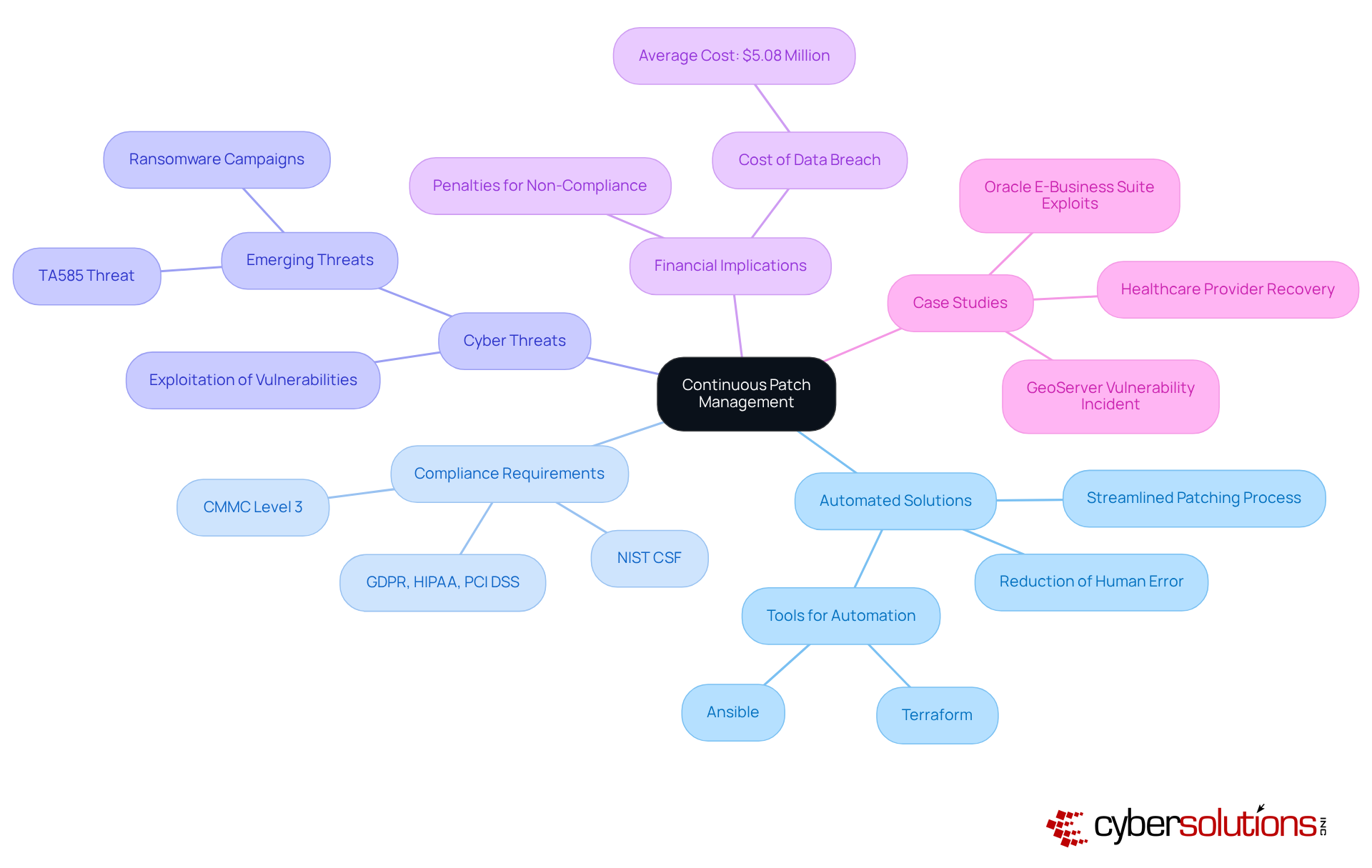
Cybersecurity Awareness Month serves as a critical reminder for organizations to bolster their protective culture. C-suite leaders must seize this opportunity to champion cybersecurity training and awareness initiatives among employees. Research indicates that 96% of leaders believe enhanced organization-wide training can significantly reduce cyberattacks, underscoring the necessity of a proactive approach to education on protection.
Fostering a culture of safety not only strengthens resilience against cyber threats but also ensures compliance with industry regulations. Effective training initiatives can lead to measurable improvements in employee behavior, with 68% of IT managers identifying employee motivation as a key barrier to implementing protective measures. By integrating real-life scenarios into training, organizations can better equip employees to recognize and respond to risks, ultimately embedding security practices into their daily routines.
Furthermore, promoting cybersecurity training among employees is vital for developing a vigilant workforce. Application allowlisting is a pivotal strategy in this regard, as it proactively blocks unauthorized software from executing, thereby mitigating the risk of malware and ransomware attacks. Essential features of application allowlisting include:
These features enhance control and policy enforcement. This strategy not only diminishes vulnerabilities but also aids organizations in fulfilling rigorous compliance standards such as HIPAA, PCI-DSS, and GDPR.
Public-private partnerships and collaborative efforts are essential in tackling the ever-evolving landscape of cyber threats. As highlighted during Cybersecurity Awareness Month, organizations that prioritize security awareness and implement robust measures like application allowlisting are better equipped to defend against potential breaches and to respond effectively to information security alerts, thereby upholding operational integrity. By making cybersecurity a collective responsibility, leaders can empower their teams to actively participate in safeguarding sensitive information and critical infrastructure.
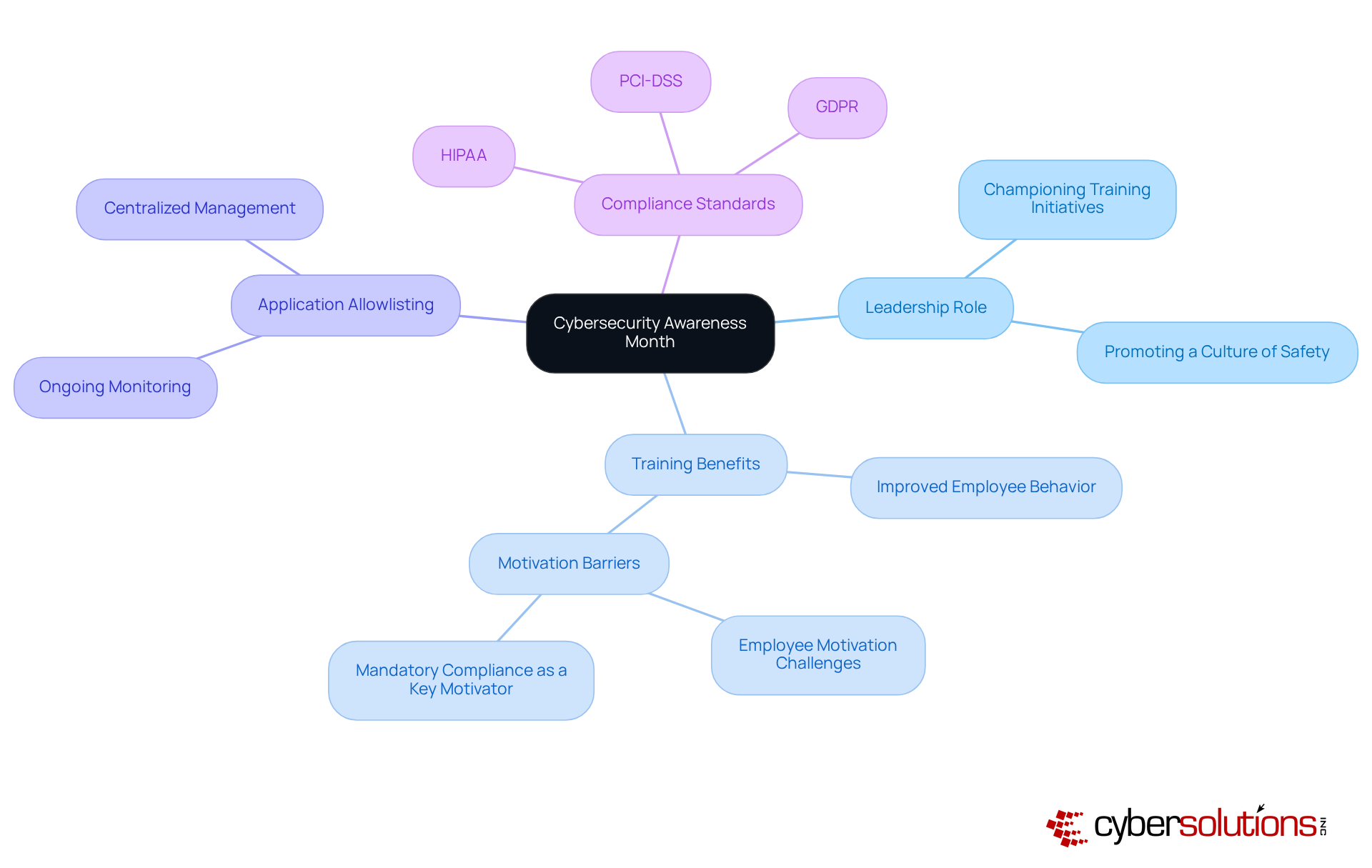
Automated Indicator Sharing (AIS) serves as a pivotal resource, enabling entities to receive real-time information security alerts regarding cyber risks and vulnerabilities. By integrating AIS into their cybersecurity frameworks, C-suite leaders can markedly enhance their detection capabilities. This strategic incorporation allows organizations to leverage real-time risk intelligence and information security alerts, enabling swift reactions to emerging threats and enhancing asset protection.
The impact of real-time danger intelligence and information security alerts on incident response times is profound. Organizations that utilize AIS have reported a significant decrease in response times, facilitating the mitigation of potential breaches before they escalate. Notably, the Cybersecurity and Infrastructure Security Agency (CISA) has seen a remarkable increase in shared cyber risk indicators, soaring from approximately 1 million in 2023 to over 10 million in 2024, largely due to contributions from a private-sector partner. This increase underscores the critical value of collaborative information sharing in bolstering cybersecurity resilience.
Expert insights affirm that the integration of AIS into cybersecurity frameworks not only elevates risk detection but also fosters a proactive security posture. Organizations adopting AIS report enhanced situational awareness and a more agile response to risks, ultimately leading to reduced operational disruptions and financial losses. As cyber threats continue to evolve, the strategic implementation of AIS becomes indispensable for organizations striving to stay ahead of potential risks.
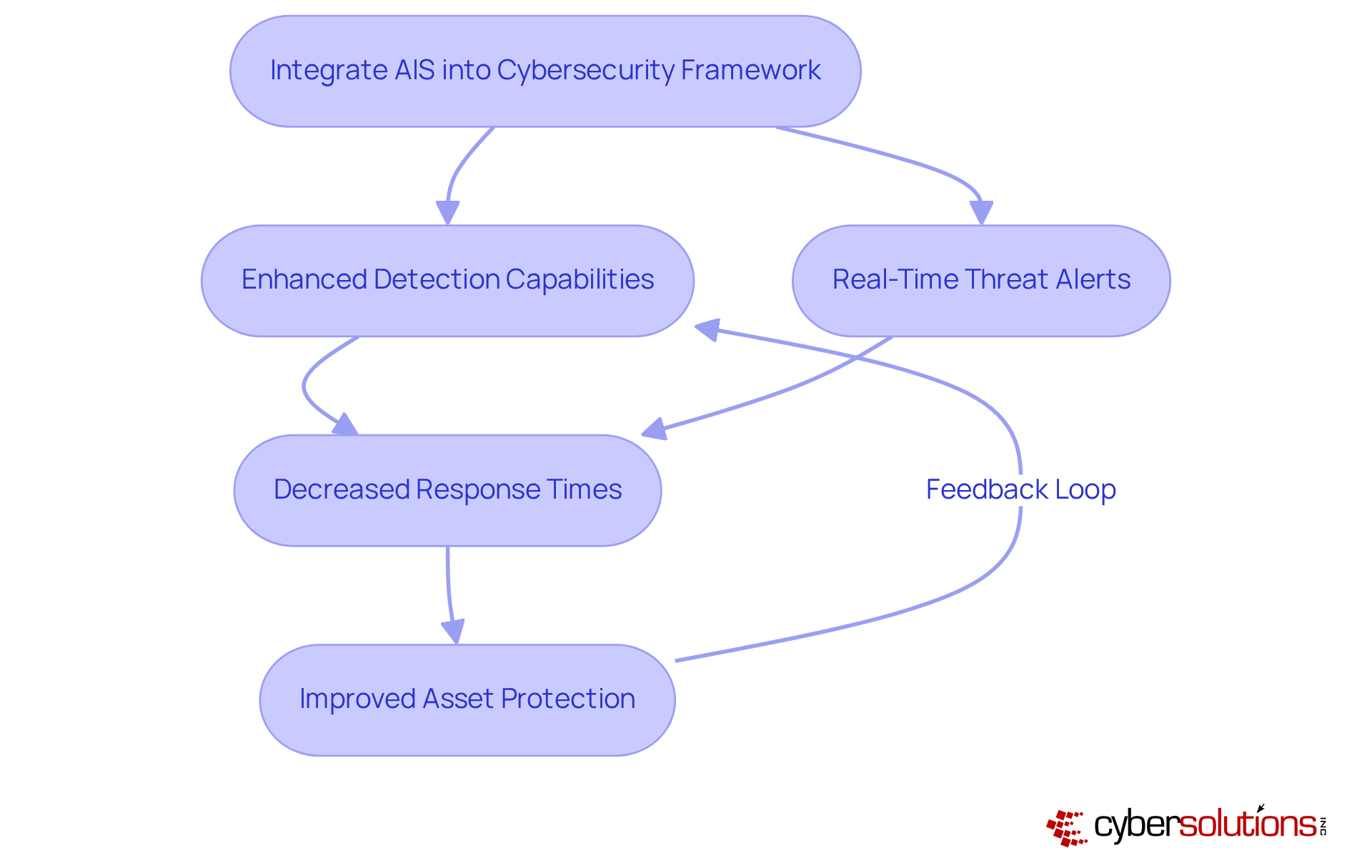
In today's cybersecurity landscape, the significance of timely information security alerts has never been more pronounced for C-suite leaders. These alerts are indispensable tools that empower executives to stay ahead of emerging threats, ensuring their organizations remain resilient and compliant in an increasingly complex digital environment. By prioritizing these alerts, leaders can make informed decisions that not only safeguard their assets but also enhance their overall security posture.
Throughout this article, we have highlighted critical insights, including:
These strategies collectively strengthen an organization's defenses.
As the cybersecurity landscape continues to evolve, the imperative for C-suite leaders is clear: proactive engagement with information security alerts is essential. By fostering a culture of security awareness and prioritizing the implementation of robust cybersecurity measures, organizations can significantly mitigate risks and protect their critical assets. Embracing these practices not only safeguards against potential breaches but also positions businesses for sustained success in an era where cyber threats are omnipresent.
What services does Cyber Solutions Inc. offer for cybersecurity?
Cyber Solutions Inc. provides a collection of cybersecurity alerts tailored to various industries, helping businesses stay informed about potential risks and respond promptly to emerging threats.
Why are cybersecurity alerts important for businesses?
Cybersecurity alerts are crucial as they enable organizations to be aware of immediate risks, shape strategic business decisions, allocate resources effectively, and enhance their security posture and operational resilience.
What recent trend was highlighted in the CrowdStrike report mentioned in the article?
The CrowdStrike report indicated a 150% increase in China-related cyber activity, emphasizing the need for timely cybersecurity alerts.
What role does the Cybersecurity and Infrastructure Security Agency (CISA) play in cybersecurity?
CISA issues advisories detailing newly discovered vulnerabilities and ongoing threats, helping organizations, particularly in the healthcare sector, to proactively mitigate potential risks.
What is application allowlisting and why is it important?
Application allowlisting is a cybersecurity strategy that prevents malware and unauthorized software from executing, significantly reducing vulnerabilities and helping organizations meet compliance requirements like HIPAA, PCI-DSS, and GDPR.
How can organizations benefit from CISA advisories?
Organizations can stay informed about critical vulnerabilities and implement timely remediation strategies, enhancing their protective measures against cyberattacks.
What is the significance of real-time monitoring and alerts in cybersecurity?
Real-time monitoring and alerts enable organizations to detect anomalies and potential security incidents swiftly, allowing for immediate action to prevent downtime or breaches.
How can C-suite executives enhance their organization's cybersecurity?
Executives should prioritize integrating proactive cybersecurity offerings, regularly review protective configurations, and stay updated on emerging threats to ensure robust security against evolving cyber challenges.